How to banish common household pests: from wasps to weevils
Treat everything from weevils to wasps
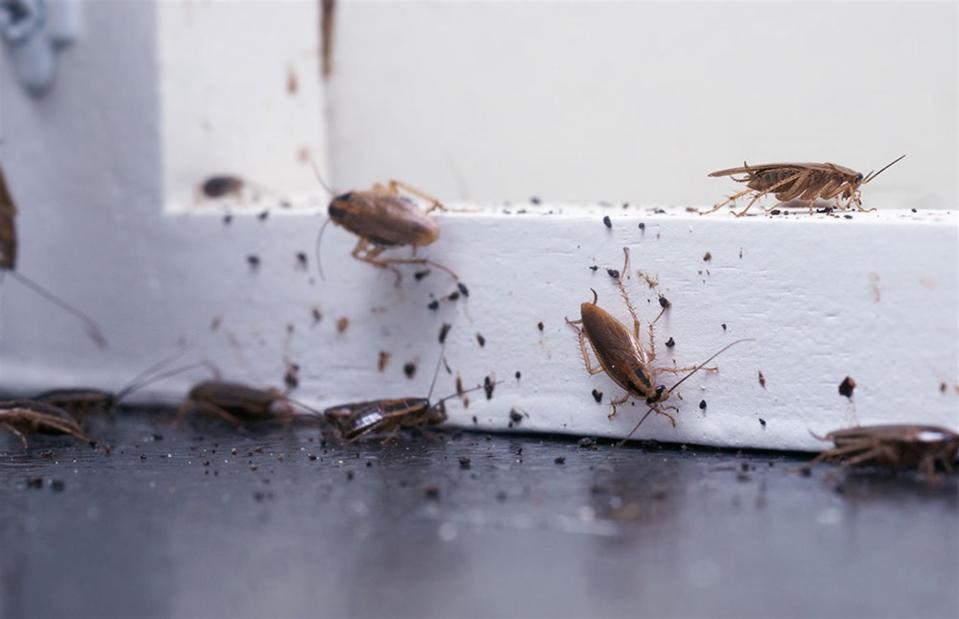
IrinaK / Shutterstock
No matter how generous a host you consider yourself, some household guests will never be welcome. So, if some of these unwanted pests have infiltrated your house, be they rodents or insects, then read on and follow our advice on how to get rid of them – and stop them from scurrying back!
Household pest: bedbugs

Georgy Dzyura / Shutterstock
Bedbugs are insects that feed on blood, leaving people with bites and rashes. They are tiny and as such, capable of concealing themselves on surfaces, but can often be found on upholstered furniture, including mattresses and sofas. Unfortunately, bedbugs can survive up to 18 months without food and experts have warned that they are becoming increasingly resistant to pesticides, making them harder to remove.
Bedbugs reproduce at an alarming rate, typically laying between 200 and 500 eggs over two months. They can also be carried on clothing, which means people inadvertently transport them from an infested location to their home. Bedbugs can be found all year round, but especially in summer, when people are travelling from place to place, spreading these pesky and hard-to-remove bugs.
Bedbugs: treatment
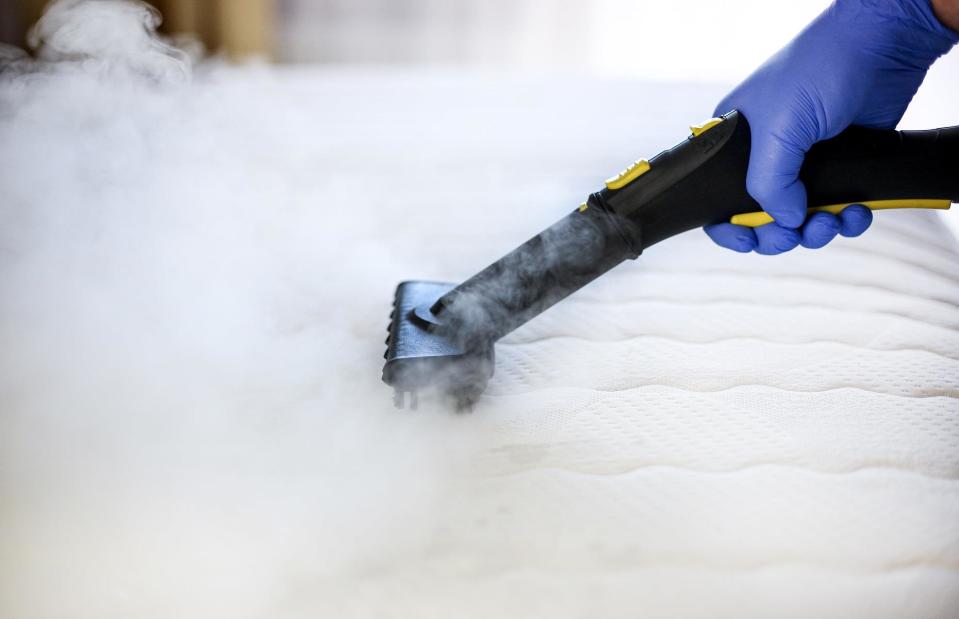
BARYSAU / Shutterstock
Prevention is better than cure, so if you travel somewhere, consider leaving your luggage far away from any upholstered surfaces until you have a chance to inspect it and clean your clothing. If you're planning on buying second-hand furniture, ensure you thoroughly examine it before bringing it inside.
As well as visible bugs and eggs, a strong odour and blood stains can both be a sign of bedbugs. Regularly cleaning your mattress, letting it air once a week and washing your bedding at least once a week will help deter pests.
If you find yourself with a bedbug problem, you will likely need professional help, since it's extremely hard to eradicate an established infestation. Wash infested bedding at a minimum of 60°C (140°F) for at least 90 minutes and, if possible, place items in the tumble dryer for a minimum of 30 minutes. You could also vacuum or steam the infested area, too, but if the problem persists, call in the experts.
Household pest: fleas

2019 Yuliya Evstratenko / Shutterstock
If you have a pet, then there's always the risk of them bringing fleas into the home. There are numerous flea species out there, including the cat flea, the bird flea and the dog flea. Although, frustratingly, dogs can temporarily play host to other fleas.
Scarily, Britain is facing a flea epidemic, with a new study finding that one in four cats carry the parasite. Enquiries relating to suspected flea infestations have increased by 47% in a year, according to recent data from Rentokil, and experts believe climate change is to blame.
Fleas: treatment
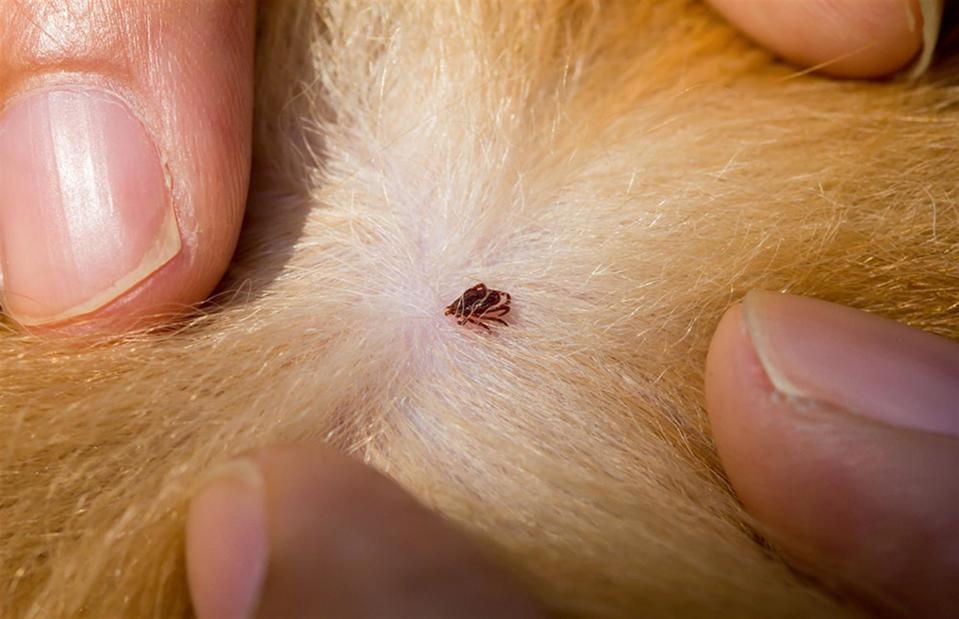
2017 Koy_Hipster / Shutterstock
The milder winters we've been experiencing in recent years have allowed the flea population to increase as they can survive by lying dormant in soft furnishings and carpets. Due to warmer temperatures, flea eggs develop into adults much faster, which can quickly lead to an infestation. So, how can you tackle them? Well, the humble vacuum cleaner is your best weapon.
Simply vacuum all areas of the home to remove any debris, eggs or adult fleas. Just ensure you empty the machine afterwards and put the bag into an outside bin. Vacuuming also encourages adult fleas to hatch from their cocoons and makes them more vulnerable to insecticides. Remember to also wash all soft furnishings (sofa covers, cushions, blankets etc.) on a hot wash.
Household pest: silverfish
![<p>Chris / Flickr [CC BY-ND 2.0]</p>](https://s.yimg.com/ny/api/res/1.2/H1zOcv3DIVpxreAh8icxJQ--/YXBwaWQ9aGlnaGxhbmRlcjt3PTk2MDtoPTYxOQ--/https://media.zenfs.com/en/loveproperty_uk_165/524afed0efe66aa600f8a1a4476f1a9c)
Chris / Flickr [CC BY-ND 2.0]
Silverfish are a type of wingless insect found across the globe. They get their name from their silvery, grey colouring and the fact that they move in a similar way to a fish. They have a tapered body, typically between 0.5 and 0.75 inches (12mm-19mm) long, a prominent tail, six legs and two antennae.
They are nocturnal, so they're most active at night, and they also move incredibly quickly. You might spot them in the bathroom, kitchen, laundry room or cellar, since they love humidity and dark, damp spots.
Silverfish: treatment

Alexeysun / Shutterstock
Silverfish are attracted to sugar and starch, so they're often drawn to things like flour, oats and even books. They will also happily munch on soap, hair, dandruff and dust, as well as clothing and fabrics like silk, cotton and linen. Luckily, though, they don't really pose a health risk and there are numerous ways to deal with them.
Home remedies include placing cinnamon, dried cloves, salt or cedar oil in infected areas. For harsher antidotes, insecticides such as synergised pyrethrin and bifenthrin can be used. However, it's worth noting that silverfish can survive for a long time without eating, which means they might not immediately take the bait.
Household pest: Mormon crickets
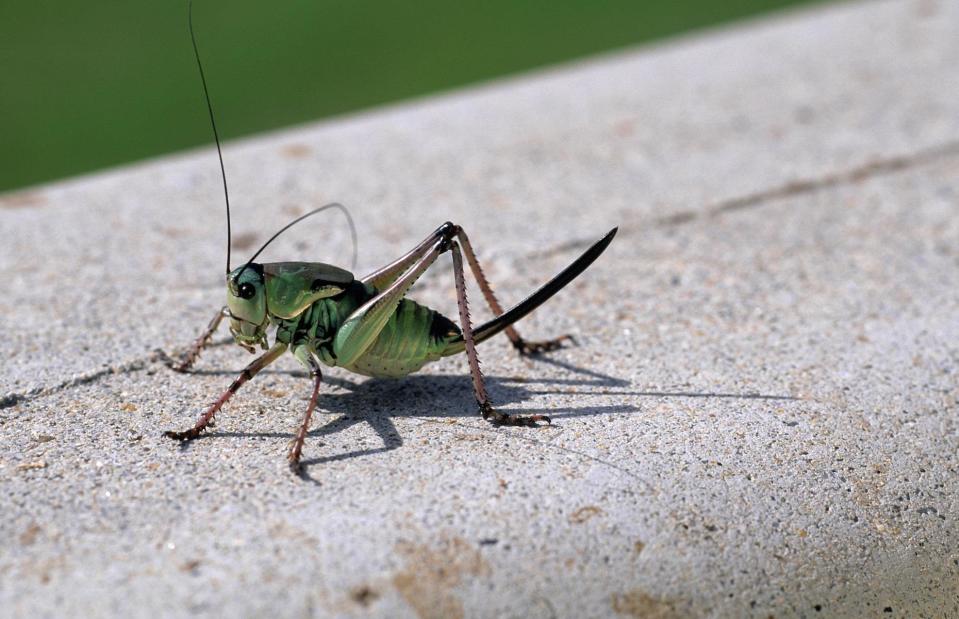
David R. Frazier Photolibrary, Inc. / Alamy Stock Photo
In early 2023, parts of the western United States, notably Nevada, were overtaken by flightless, ground-dwelling insects known as Mormon crickets. We're talking thousands of these bugs blanketing major highways and even covering the façades of homes.
Closely resembling a grasshopper, they're actually a type of shield-backed katydid and eat native grasses, shrubs and crops. Outbreaks are triggered by droughts, which are common in hot and dry states like Nevada. What's worse, killing them reportedly leads to a smell akin to dog faeces or fish.
Household pest: Mormon crickets
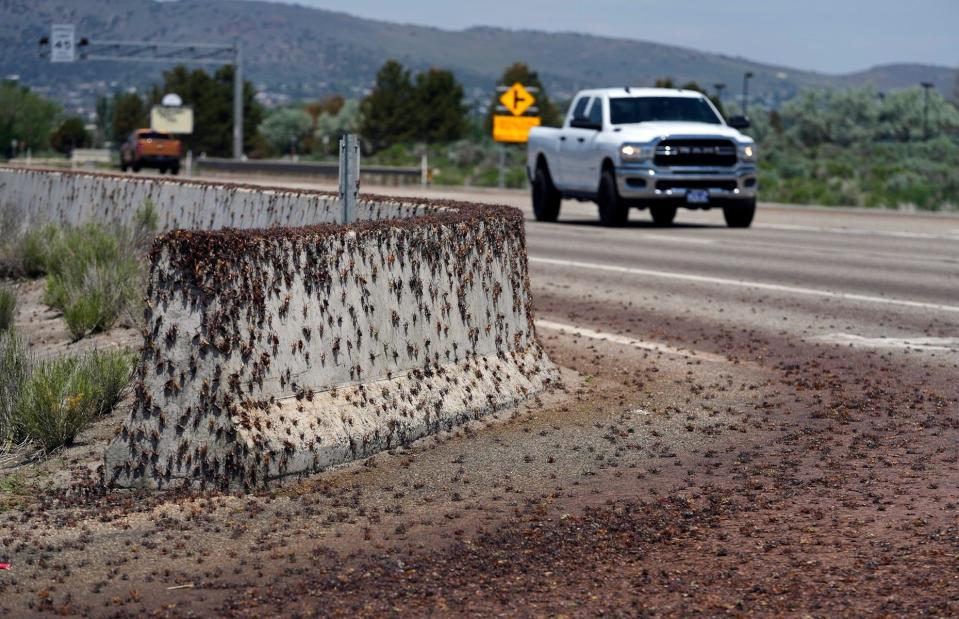
Associated Press / Alamy Stock Photo
This image shows a roadside in Spring Creek, Nevada, covered in these invasive bugs – and it's almost apocalyptic! So, how can you deal with Mormon crickets? Well, Nevada locals have tried everything; from vinegar and bleach concoctions to power-washing them away, but to no avail.
Instead, people are advised to erect a smooth fence around their garden, since Mormon crickets cannot walk up slick, vertical barriers. If one enters the home, they should be vacuumed into a disposable, sealed bag.
Household pest: moths
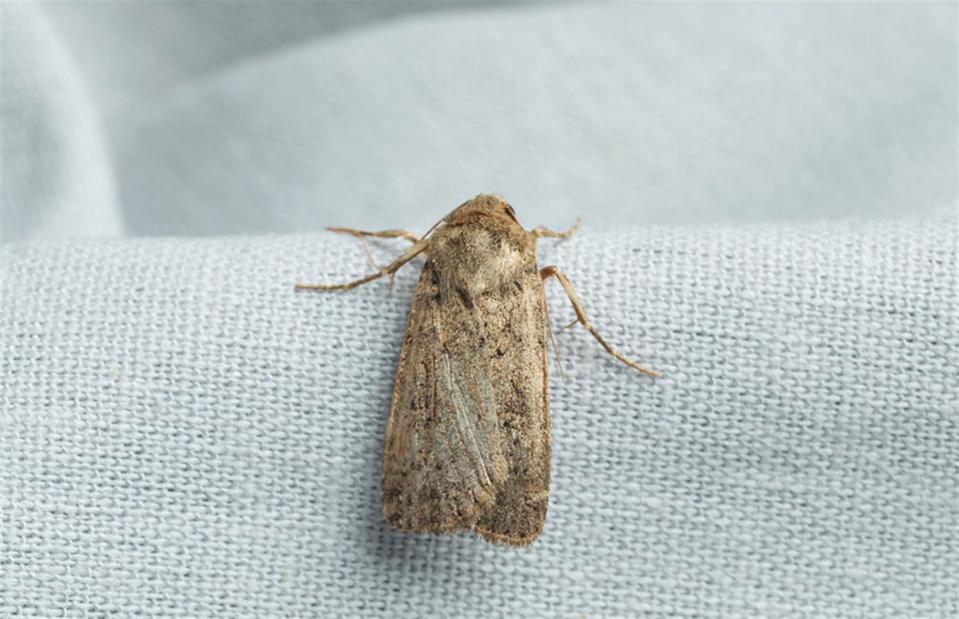
2022 New Africa / Shutterstock
Who hasn't fallen victim to moth holes at some point in their lives? It's little wonder since moths love dark, undisturbed areas like wardrobes, where they can hide in the creases of your cashmere cardigan.
And while adult moths don't eat clothing, their larvae do! According to Pest-Stop, year-on-year, the UK has seen a 250% increase in the number of searches for ‘how to get rid of moths,’ due in large part to increasing temperatures. To prevent moth invasions, you must practice good housekeeping, both in the bedroom and in the kitchen.
Moths: treatment

Ivan Karasev / Alamy Stock Photo
There's a direct correlation between moth damage and stained or dirty clothes, so keep them clean and regularly vacuum closets. Keep an eye out for larvae webs on material and wash clothes at temperatures of at least 50ºC (122°F) to remove them. In the kitchen, avoid keeping products past their 'use by date' and if you use storage jars, check them regularly for infestations. Avoid pouring new products on top of old, too.
Moths hate vetiver, a grass from South Asia, so tuck a bundle into a linen sachet and place it in a problem area. If your infestation is out of control, then it might be time to call in the experts.
Household pest: woodlice
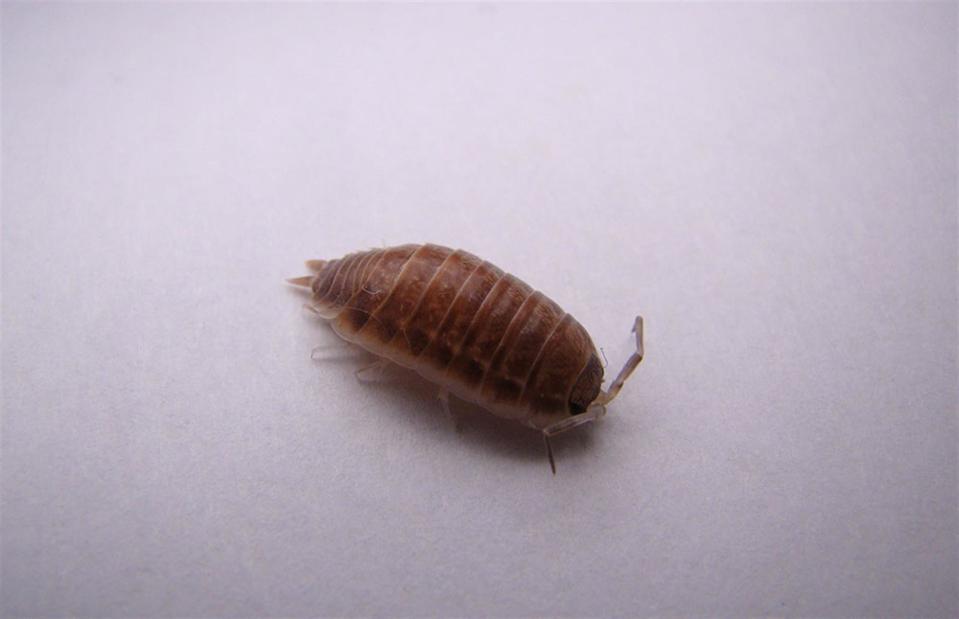
Dr.MYM / Shutterstock
Woodlice are generally harmless but these rather unpleasant critters can damage wooden floors and furniture.
Though they are common garden pests, occasionally woodlice end up inside the home, often coming in through windows or doors that are not sealed, or sometimes even coming up through the foundations.
Woodlice: treatment

Raphael Comber Sales / Shutterstock
As with many household pests, there are lots of sprays and powders on the market to deal with these critters but a good first step is to cover up the places they are coming in, using things such as air vent covers.
Apply some common sense, too – an innocuous pile of wood outside your back door may just be the breeding ground they are looking for and could even provide a stairway to an entrance.
Household pest: slugs
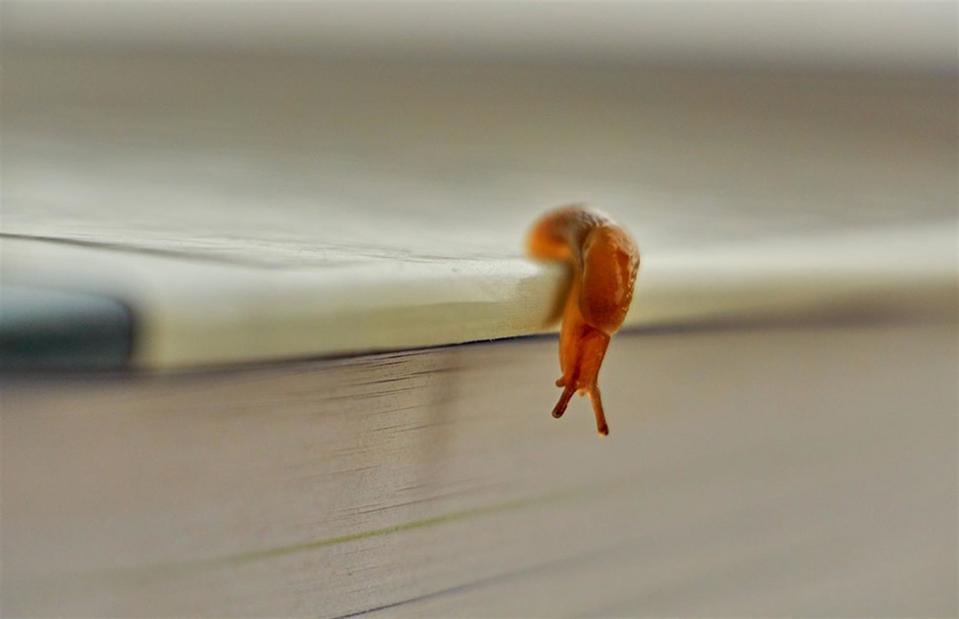
Paul's photos of stuff / Shutterstock
Like woodlice, slugs and other slippery creatures in the gastropod family such as snails are more often found in gardens, and though they’re not particularly wanted in our gardens either – where they tend to eat up all the plants – we definitely don’t want them inside our houses.
Slugs: treatment
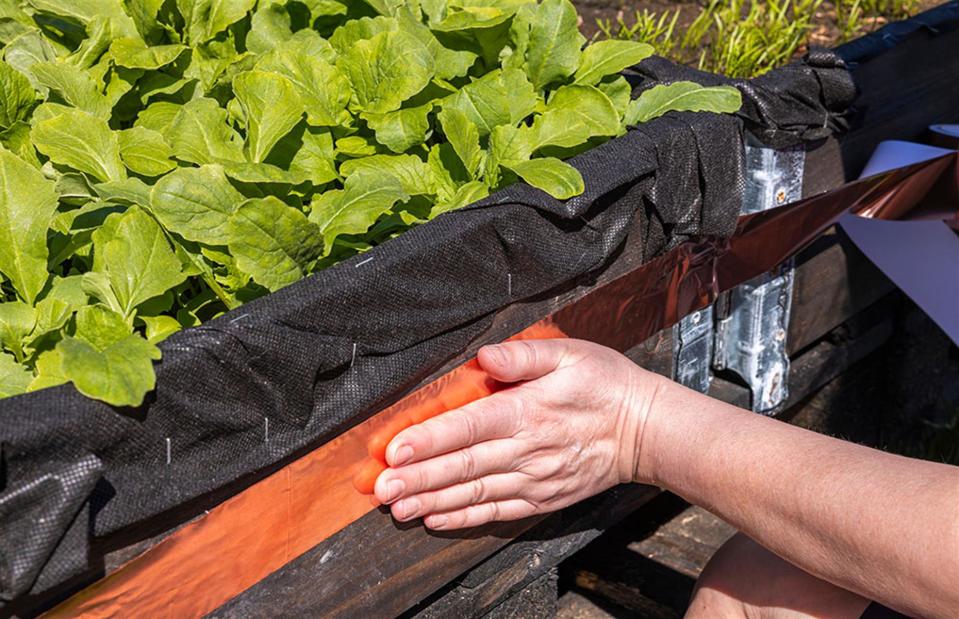
Mulevich / Shutterstock
In many countries, slug pellets containing metaldehyde are banned, since they can cause harm to other animals, so some homeowners have switched to wool pellets instead.
However, one of the best ways to stop slugs from getting in your home is to lay down copper tape, which deters them by giving them a small electric shock. Lots of gardeners use it round plant pots, but you could place it around places where you think they are getting in.
Household pest: ants
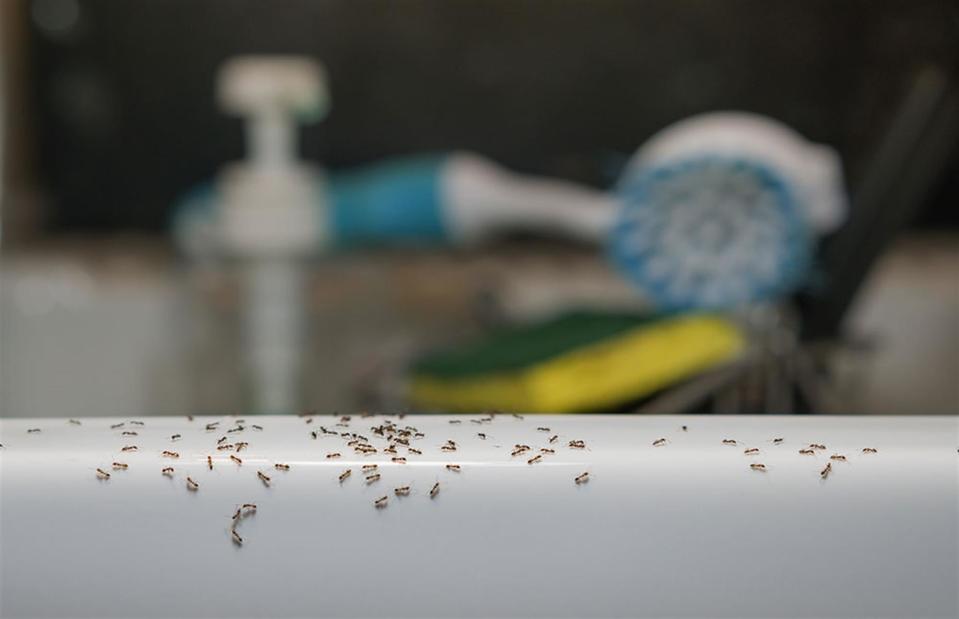
NancyP5 / Shutterstock
Once you get one ant in your house it sometimes feels as though they've called all their friends and family and told them to come too, which is actually quite close to the truth.
Ants are very social and highly organised – once a foraging worker ant has found a big supply of food, it will let its colony know.
Ants: treatment

Patrycja St / Shutterstock
Putting away food as soon as it's finished and cleaning surfaces and floors of crumbs is one way of deterring ants. Some experts also suggest drawing chalk lines outside doors and windows as this affects ants' pheromones.
It's thought coffee granules and spices may have the same effect. If all else fails, pick up an ant powder from the supermarket or hardware shop, but remember to keep it away from pets and children.
Household pests: mice and rats
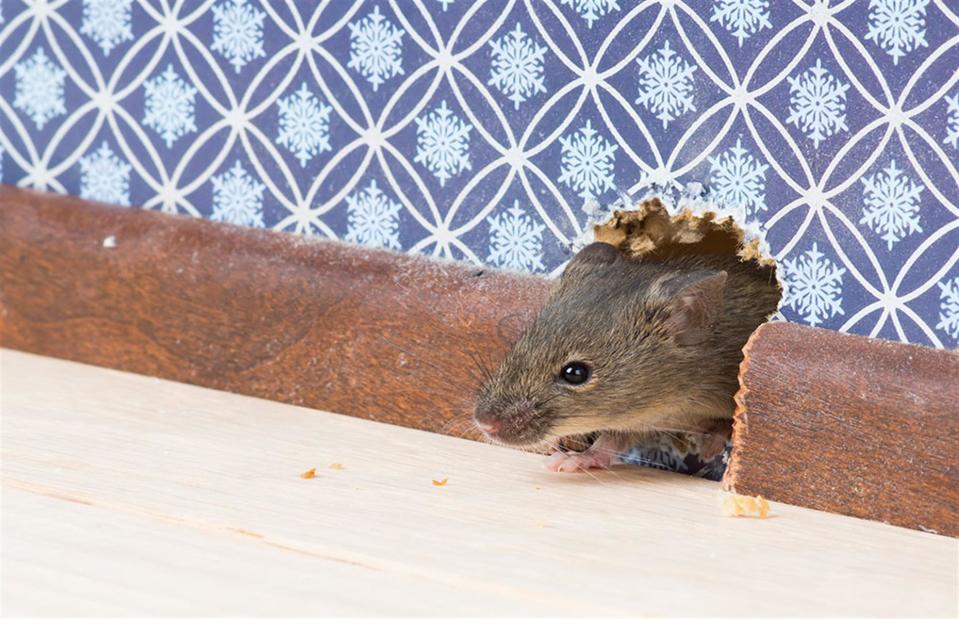
IrinaK / Shutterstock
The telltale wall scratching or droppings of mice or – surely worse! – rats, are enough to instil terror in most of us. There are billions of these rodents around the world, with the British Pest Control Association (BPCA) estimating there are between 10.5 million and 120 million rats in the UK alone. China is in a worse place, with more than two billion rats thought to be in the country.
So, there's certainly a real risk that you could find one in your home. In the past, harsh winters managed rat populations naturally, but now populations are growing again.
Mice and rats: treatment
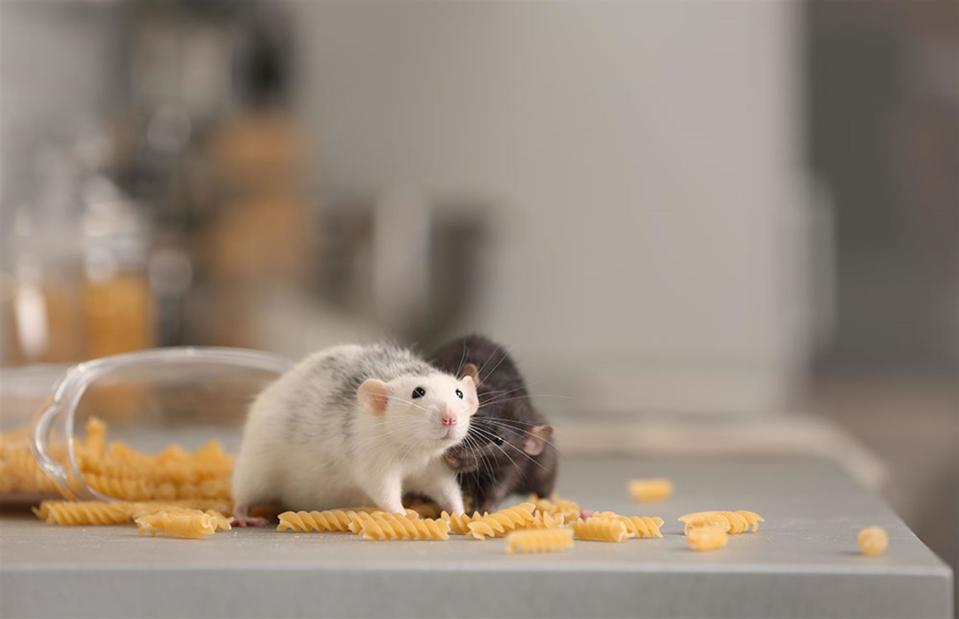
New Africa / Shutterstock
Prevention is better than cure, so seal any gaps as small as 0.2 inches (5mm) and store food in air-tight containers. Be sure to clean away debris as quickly as possible and consider installing door sweeps or brush strips on external doors, to stop mice from entering the home.
If mice are already in your home, then you can lay humane live catch traps. These are readily available online and from hardware stores. Mouse traps should not be used for rats – if you have the latter, it's time to call pest control.
Household pests: earwigs
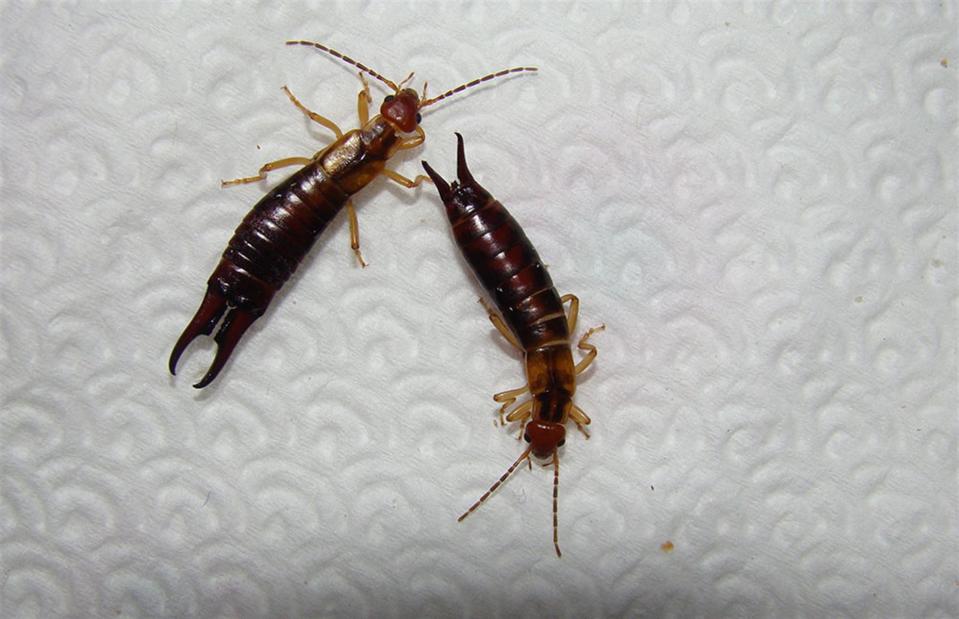
Dr.MYM / Shutterstock
Recognised by their long pincers at the end of their body, earwigs are largely nocturnal creatures who seek out dark cracks and crevices.
They are not poisonous and despite their name, are highly unlikely to enter a human ear, but they are drawn to damp areas and most of us wouldn't want to share our bathroom with them.
Earwigs: treatment

myboys.me / Shutterstock
With earwigs prone to warm, damp areas, investing in a dehumidifier that will encourage them to stay away is one humane treatment and should also deter other little critters, like beetles and cockroaches, that like similar environments.
Household pests: false black widow spiders

Stephan Morris / Shutterstock
Even if you’re not an arachnophobic and spiders don’t fill you with fear, the chances are you don’t want them spoiling your cosy night in by crawling over the sofa on film night.
And with false black widow spiders, you could end up with a nasty bite, too! They're relatively small in size and have a shiny black globular body, similar to the deadly black widow spider. You'll normally spot their loose tangle of webbing around window and door frames.
False black widow spiders: treatment
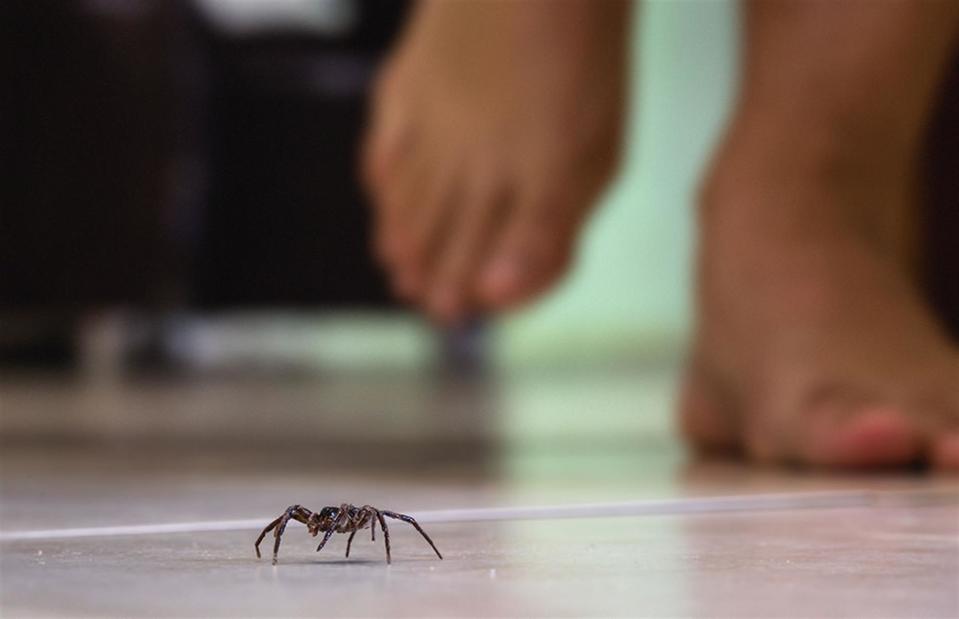
RHJPhtotos / Shutterstock
While the old glass over a piece of cardboard trick works for many, wouldn't it be nice if you just didn't have to bother with them at all? The smell of mint and black pepper is a natural deterrent to spiders and may also work on ants, mosquitoes, moths and possibly even bedbugs.
The trick is to vacuum well first to get rid of any that may already be in the house. Other scented plants like rosemary and basil may also work.
Household pests: wasps

Koldunov Alexey / Shutterstock
Wasps are the common summer pest that turns a perfectly lovely picnic into the stuff of nightmares, and being stung by one is no laughing matter either.
So when they invade our homes – often coming in through open doors and windows in summer – it feels like they are really taking the biscuit.
Wasps: treatment

Thomas Trompeter / Shutterstock
When it's just the odd one coming in then you can usually keep them at bay by opening windows and swatting them back outside, but when you have a wasps nest, it's a whole different problem.
According to Rentokil, large wasp nests can contain up to 25,000 wasps, so if you see something like this outside a window, in a wall cavity or loft, call the professionals in immediately.
Household pests: fruit flies
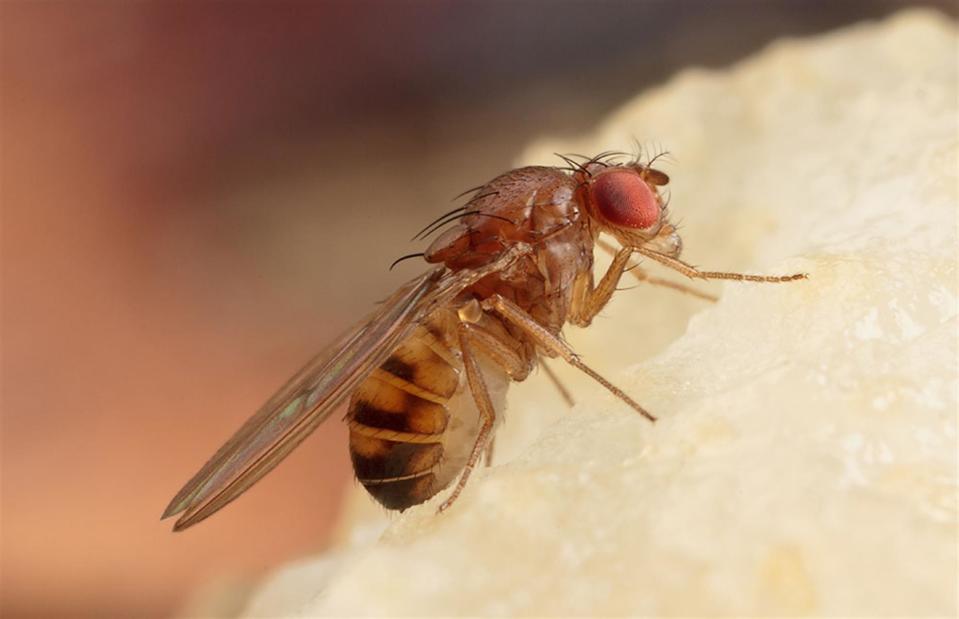
Ant Cooper / Shutterstock
Staying true to their name, fruit flies tend to be drawn to over-ripe or fermenting fruits lying in fruit bowls, where they quickly lay their eggs, so it doesn't take long for an infestation to get out of hand.
It's also worth noting they can be found near dirty drains and around other food left out, too.
Fruit flies: treatment
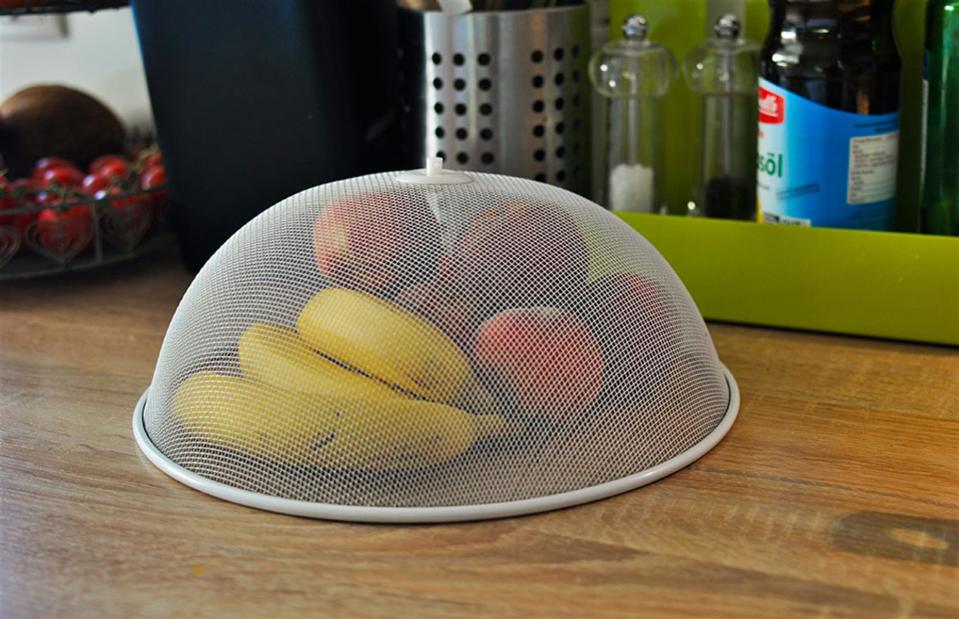
IchBinJeffee / Shutterstock
As with anything, prevention is key. Placing a cover over your fruit bowl – especially in summer months – should keep them off to a large extent but you should also be vigilant and get rid/use up any fruit that is on the turn.
There are also fruit fly traps on the market or you could make your own – put some apple cider vinegar in a bowl, cover it with plastic film, pierce a few small holes in it (big enough to get in but they shouldn't be able to get out), and you have your own DIY trap.
Household pests: cockroaches
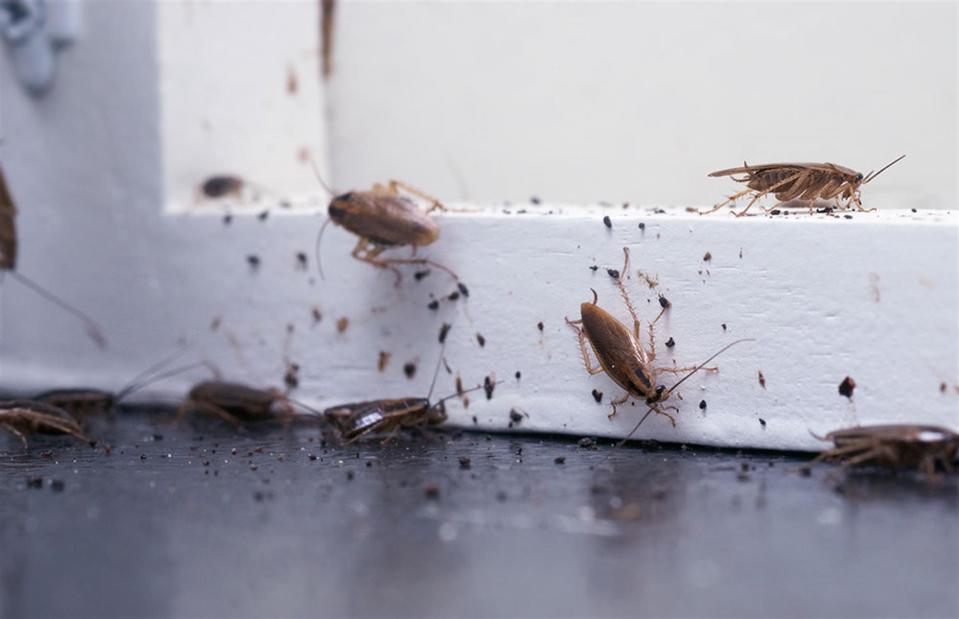
IrinaK / Shutterstock
Cockroaches are horrid critters that no one wants to find inside their house yet they have been the bane of human homes for a very long time indeed.
In fact, there is evidence cavemen had to put up with them – and it’s said that when the apocalypse comes they will be one of the few things to survive. They love warm, dark spaces so can often be found under appliances or in food cupboards where they can feast on food debris and sometimes even in sofas.
Cockroaches: treatment
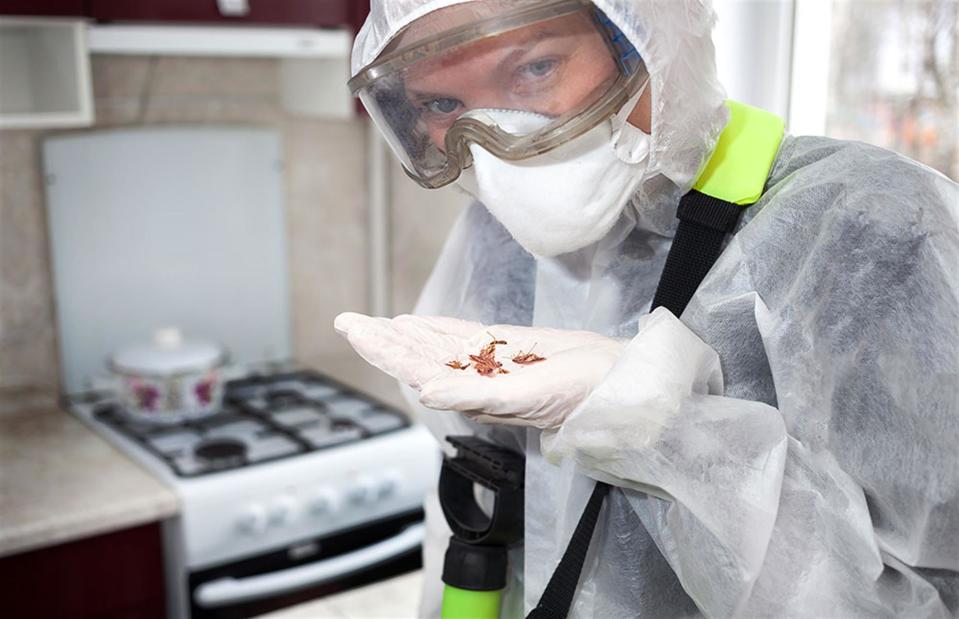
Kurteev Gennadii / Shutterstock
It's best to employ a pest controller to deal with a cockroach infestation, who will use dusts, baits and sprays, as well as deal with any potential shelters.
There are, of course, lots of other tips doing the rounds on social media, including washing up liquid and water sprayed on affected areas, or peppermint oil. One way of killing cockroaches without using harsh chemicals is to mix three parts Borax with one part sugar and apply it to the areas where you've seen them.
Household pests: woodworm
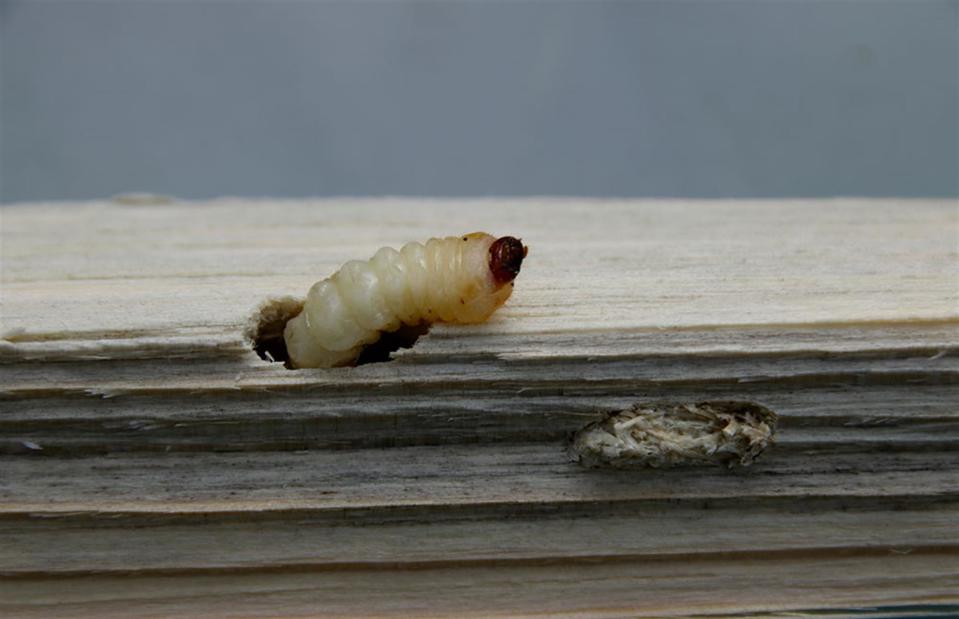
Horst Bingemer / Shutterstock
The larvae of wood boring beetle, there's very little to like about woodworm. The key to stopping them from causing irreparable damage to your property is to identify them early.
If left untreated, woodworm can seriously weaken timber, such as your subfloors and ceilings, which may lead to structural damage and costly repairs.
Woodworm: treatment

Fabrizio Misson / Shutterstock
Keep an eye on woodwork and wood furnishings in your home – antique pieces, favourite tables and chairs and doorframes, for signs such as crumbling wood, bore dust, tunnels in wood and exit holes.
You may even spot the larvae themselves or beetles. Book a survey with a pest control expert if you see any of the above.
Household pests: flies and maggots

Holger Kirk / Shutterstock
If there is one sight certain to put you off your food, it's the sight of wriggling maggots in your kitchen.
While maggots are usually the larvae of flies, it's not always the case, so try to look out for adults of the larvae to assess what you are dealing with – as it could also be a sign of beetles, moths, or fleas.
Flies and maggots: treatment

Lithiumphoto / Shutterstock
The best way to keep maggots away is to keep your home clean of rotting food – including the dustbin. A solution of three parts white vinegar to one part water should kill the maggots you have found, and then deal with the flies.
Basil is also said to be effective at deterring flies. They apparently hate the stuff, so it might be time to invest in a basil plant.
Household pests: weevils
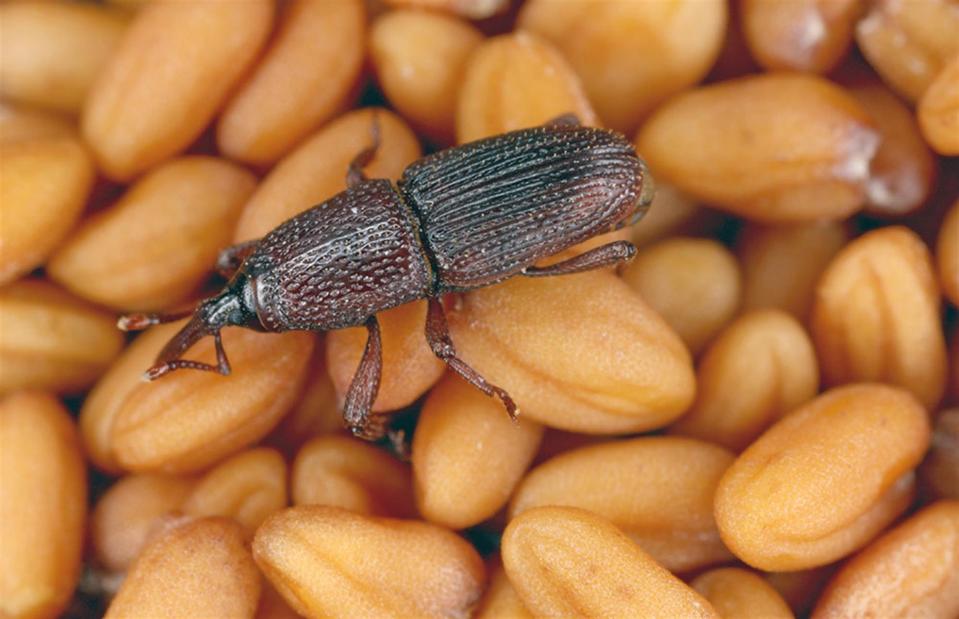
Tomasz Klejdysz / Shutterstock
These tiny beetles are sometimes referred to as flour beetles – as they are often drawn to flour or grains – or snout beetles due to their appearance.
If you find these in your home, it's highly likely they've come in via some foodstuff you've bought, so if you can identify the offending item, return it to the store and complain. Next, destroy the food and get ready for a deep clean.
Weevils: treatment
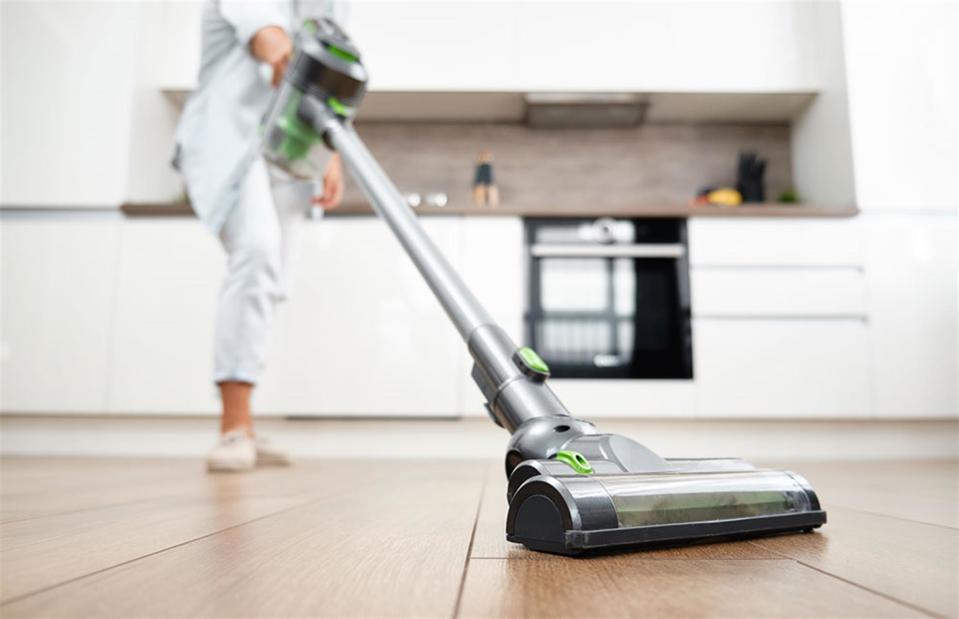
soul_studio / Shutterstock
Clear out the cupboards where the offending item was stored and make sure you give the cupboard and the floor around it a good vacuum.
Once you have finished vacuuming, take the bag outside to the bin and empty it to prevent any stray weevils from coming back in and then clean the worktops and other surfaces.
Household pest: fungus gnats
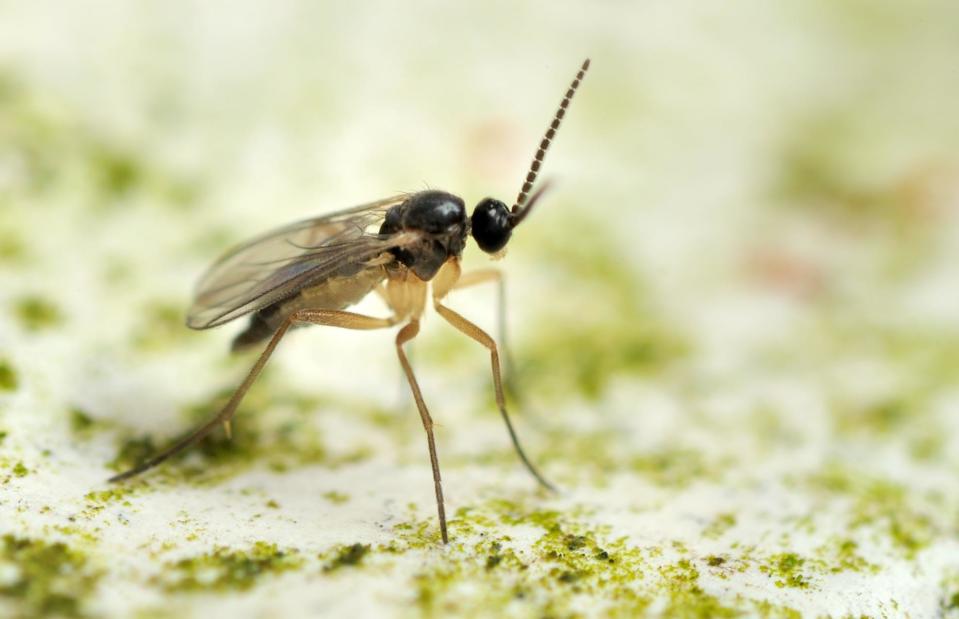
D. Kucharski K. Kucharska / Shutterstock
We all love caring for houseplants (or trying to, anyway), but if you're a plant parent, you'll likely have been bothered by these irritating little bugs at one time or another. Also known as sciarid flies, fungus gnats are tiny, greyish-brown flies that grow about 0.12 inches (3mm) long. They are entirely harmless, but they can certainly be a nuisance.
They feed on rotting organic matter, like soil and compost where the fungus is growing, so they can often be found flying around houseplants. They also lay their larvae – pale, slender maggots in soil.
Fungus gnats: treatment
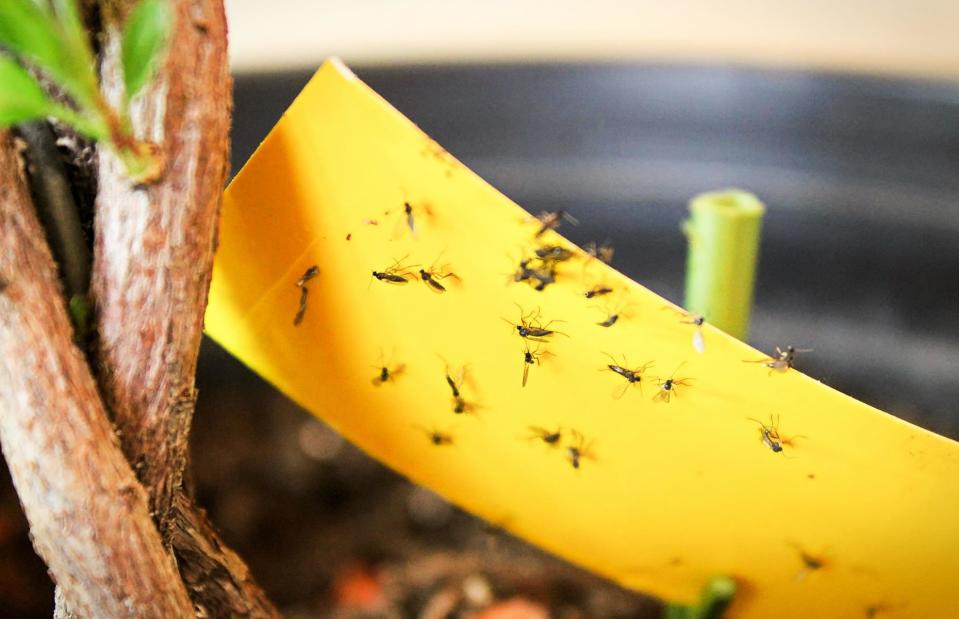
Amelia Martin / Shutterstock
The best way to deter fungus gnats is to keep an eye on your indoor plants, looking for any signs of insects or decay. Be sure not to overwater your plants, as this can create a breeding ground for insects and flies.
If you already have an issue, then you can control their numbers by placing sticky bug traps near plants. Widely available from garden centres and online stores, these clever traps will stop the flies in their tracks. As a homemade alternative, fill a jar about half full with apple cider vinegar and cover the top with cling film (plastic wrap). Secure the wrap before poking small holes in the top. The gnats will enter and be unable to leave.


